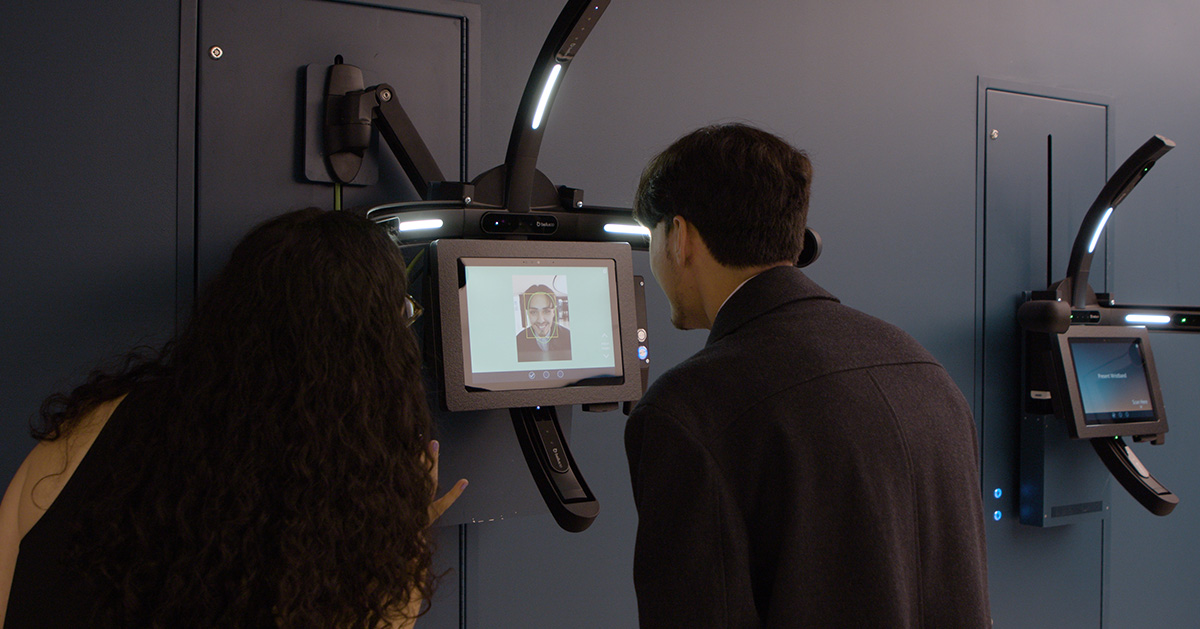Experiential Technology: Shaping Immersive Experiences
Experiential technology is revolutionizing how we interact with the world, blurring the lines between the physical and digital realms. It’s no longer about simply consuming information but about actively engaging […]

Experiential technology is revolutionizing how we interact with the world, blurring the lines between the physical and digital realms. It’s no longer about simply consuming information but about actively engaging with it, creating immersive and personalized experiences that captivate our senses and spark our imaginations.
From virtual reality headsets that transport us to distant worlds to augmented reality applications that overlay digital information onto our physical surroundings, experiential technology is transforming industries, enriching our lives, and shaping the future of human interaction.
Technologies Enabling Experiential Technology

Experiential technology leverages various cutting-edge technologies to create immersive and engaging experiences. These technologies are crucial for transforming the way we interact with the world around us.
Virtual Reality (VR)
VR technology immerses users in computer-generated environments, creating a sense of presence and interaction. It uses head-mounted displays (HMDs) that track head movements, projecting stereoscopic images and sounds, creating a 3D experience.
VR has applications in various fields, including:
- Gaming: VR games provide immersive experiences, allowing players to interact with virtual worlds in new ways.
- Training and Simulation: VR training programs offer realistic simulations for professionals in various fields, such as healthcare, aviation, and military.
- Education: VR can create interactive and engaging learning experiences, allowing students to explore historical events, visit distant locations, and learn through virtual experiments.
- Retail: VR allows customers to experience products virtually, such as trying on clothes or viewing furniture in their homes.
Augmented Reality (AR), Experiential technology
AR technology overlays digital information onto the real world, enhancing the user’s perception of their surroundings. It uses devices like smartphones, tablets, and smart glasses to project virtual objects, images, and data onto the real world.
AR technology has numerous applications, including:
- Gaming: AR games, like Pokemon Go, blend virtual elements with the real world, encouraging players to explore their surroundings and interact with virtual creatures.
- Navigation: AR navigation apps provide real-time directions and information, overlaying virtual routes and landmarks onto the user’s view.
- Shopping: AR allows customers to visualize products in their homes before purchasing, using their smartphones to scan and view furniture or appliances in their space.
- Maintenance and Repair: AR overlays instructions and schematics onto real-world objects, aiding technicians in repairing equipment or performing complex tasks.
Artificial Intelligence (AI)
AI technology enables machines to learn and perform tasks that typically require human intelligence, such as understanding natural language, recognizing patterns, and making decisions. It plays a crucial role in experiential technology by personalizing experiences, providing intelligent recommendations, and creating interactive and responsive environments.
AI’s role in experiential technology includes:
- Personalized Experiences: AI analyzes user data and preferences to tailor experiences, recommending products, content, and services based on individual needs.
- Intelligent Assistants: AI-powered virtual assistants provide personalized assistance, answering questions, scheduling appointments, and managing tasks.
- Interactive Environments: AI can create interactive environments that respond to user input and adapt to their preferences, such as personalized gaming experiences or interactive museum exhibits.
- Content Creation: AI can generate personalized content, such as music, art, and stories, based on user preferences and feedback.
Internet of Things (IoT)
IoT technology connects physical devices to the internet, enabling them to collect and exchange data. It plays a crucial role in experiential technology by creating connected and interactive environments, enabling seamless integration between the physical and digital worlds.
IoT’s contribution to experiential technology includes:
- Smart Homes: IoT devices, like smart lights, thermostats, and security systems, create personalized and responsive home environments.
- Interactive Spaces: IoT sensors can create interactive public spaces, such as museums or retail stores, where visitors can interact with exhibits or products through connected devices.
- Personalized Experiences: IoT devices collect data on user behavior and preferences, enabling the personalization of experiences in various settings, such as hotels, restaurants, and theme parks.
- Data-Driven Insights: IoT data can be analyzed to provide valuable insights into user behavior and preferences, enhancing the design and optimization of experiential technology.
Closing Notes: Experiential Technology
As experiential technology continues to evolve, it promises to reshape our world in profound ways. By seamlessly blending the physical and digital, it empowers us to explore new possibilities, connect with others in meaningful ways, and create truly unforgettable experiences.
Experiential technology aims to immerse users in a world of sensations, and one way to achieve this is by manipulating sound. The quiet technologies halo headset is a prime example, offering a personalized audio experience that can transport you to different environments or enhance your focus.
By manipulating sound, these headsets provide a tangible connection to the digital world, allowing users to experience technology in a new and engaging way.









